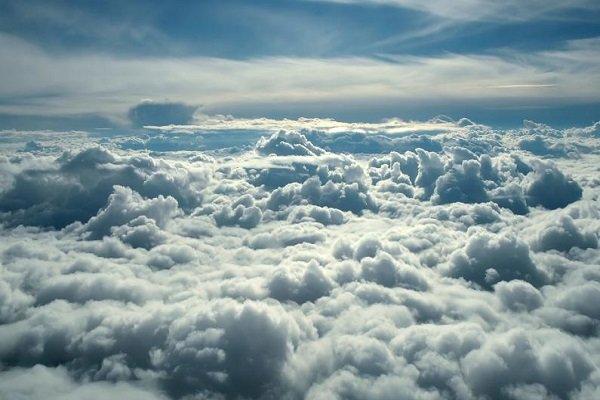Cloud seeding projects to help erode crude income dependence
Cloud seeding operations are being carried out in many countries with arid geography and high underground water consumption which is depleting the precious resource.
Head of Iran’s National Cloud Seeding Research Center (NCSRC), Farid Golkar, informed in February that after a two-year delay a cloud seeding project will be carried out for two weeks in some northern (Zagros and Alborz Mountains), central (Yazd and Isfahan) and southern provinces (Fars and Kerman).
The latest statistics released by the Meteorological Organization show that the country received 136.9 millimeters of precipitations since the beginning of the current water year (Sept 2019-August 2020), which is 4.9 percent more than the same period a year before.
Moreover, the long-term average rainfall for the country was estimated at 109 mm, demonstrating a 25 percent raise in the rainfall this year. However, some provinces of the country are dealing with rainfall shortages and cloud seeding may be a way to ease precipitation scarcity.
“Average rainfall in the country is usually one-third of the world average. Iran is always in the red zone when it comes to rains and depletion of water resources,” Golkar said.
Located in an arid and semi-arid region, Iran has suffered from drought for decades. “We must control water consumption,” said Golkar adding that “rain can be increased with the help of cloud seeding.” The global warming had made the situation with the droughts worse all around the world, including Iran.
NCSRC works in cooperation with IRGC to carry out cloud seeding projects across the country.
For those unfamiliar, this procedure induces rain artificially by exposing chemicals to the cloud which would have otherwise been blown away by the wind to another region.
Cloud seeding is a process where chemicals, including salt, are shot into the clouds using planes, generators over mountains, rockets or drones that make clouds release their moisture as rain. Rainfall occurs when supercooled droplets of water – those that are still liquid but are at a temperature below the usual freezing point to zero centigrade – form ice crystals.
"However, some provinces of the country are dealing with rainfall shortages and cloud seeding may be a way to ease precipitation scarcity.“Average rainfall in the country is usually one-third of the world average"Too heavy to remain suspended in the air, these then fall, often on the way down as to form snow.
Water shortage is crucial in many provinces in Iran. Researchers at the NCSRC in Yazd province, central Iran, laid plans for cloud-seeding operations to induce rain in 12 provinces over the upcoming water years in September 2014.
On January 7, 2015 cloud-seeding operations were launched in Yazd province without reports on the outcome.
In 2016, Iranian elite scientist, Hasan Akbari-Layegh, designed and manufactured a drone for this specific purpose aimed at reviving dry lakes in the country with seeding operations.
Following rumors on social media regarding last spring’s flash floods in Iran Golkar told the Persian daily ‘Iran’ that the “NCSRC is developing infrastructure and the last that we carried out an operation goes back to 2017.”
While seeding technology in Iran is at its infancy such a technology has been successfully implemented in over 20 countries around the world.
In India, cloud seeding operations were conducted as far back as 1983 by Tamil Nadu state government due to severe drought.
China used seeding in Beijing just before the 2008 Olympic Games in order to clear the air pollution.
The UAE is one of the first countries in the Persian Gulf region to use cloud seeding technology for more than a decade using sophisticated weather radar to monitor the atmosphere of the country round the clock.
Last November, the National Center of Meteorology (NCM) informed that five cloud seeding operations had been carried out in a matter of 48 hours. As a result, heavy rainfall lashed the country, with videos circulating on social media on debris flying around, water entering sections of the Dubai Mall, major traffic jams, and waterlogged roads.
It was announced by several UAE-based newspapers that NCM carried out 95 cloud seeding operations across the UAE in the first quarter of 2020. Due to heavy widespread rainfalls from January 9-12 (190.4mm), UAE broke the highest rainfall record since 1996.
120 families in the Al Fahleen area in Dubai were badly affected by storms and there were reports of damaged roads, fallen walls and rocks, landslides, and uprooted trees, raising the question of whether cloud-seeding in UAE has gone too far? Following this incident, the UAE announced plans to invest $136 million in flood protection measures.
The Arab News reported in February that Saudi Arabia approved cloud-seeding technology for rain enhancement to increase the amount of rain by 20 percent. The kingdom is one of the world’s most arid countries, with less than 100 millimeters of rainfall a year.
About 85 percent of the water demand is met by groundwater sources but the rate of extraction is treater than replacement due to low rainfall.
Although there are no laws against seeding operations there is political strife over neighboring regions that accuse each other of ‘stealing rain’ and the issue remains an ongoing concern today.
Iran’s non-oil exports are crucial to the country’s economy as the U.S. sanctions are gradually eroding the country’s dependence on crude exports. The country had a record of agricultural production with total exports of over $5.8 billion in agricultural and foodstuff products in the previous Iranian calendar year (ended on March 19) because of better rainfalls in certain areas.
Water resources are essential in the industrial production of value-added mineral exports as an alternative to crude. It will also help the country to resist the U.S. sanctions intended to bring “maximum pressure”.
Friday marked two years since U.S.
"Iran is always in the red zone when it comes to rains and depletion of water resources,” Golkar said.Located in an arid and semi-arid region, Iran has suffered from drought for decades"President Trump announced America’s withdrawal from the 2015 Iran nuclear deal. For two years the U.S. has imposed unprecedented economic pressure on Tehran. For the Islamic Republic to resist such injustice amid this coronavirus pandemic it needs to erode its dependence on oil and focus on other sources of income, e.g. tourism, agriculture, industrial, etc.
Water resources are essential in all these sectors. Oil development projects, especially in this global pandemic environment should be put on hold for now.
It was hard to miss the sound of thunder in recent days in Tehran. Whether cloudseeding has helped with the rainfalls remains to be answered by the government officials.
This article was initially published in the Tehran Times
Related news
Other news on this day
Copyright © 2001-2024 - Sarkhat.com - About Sarkhat - News Archive - جدول لیگ برتر ایران






